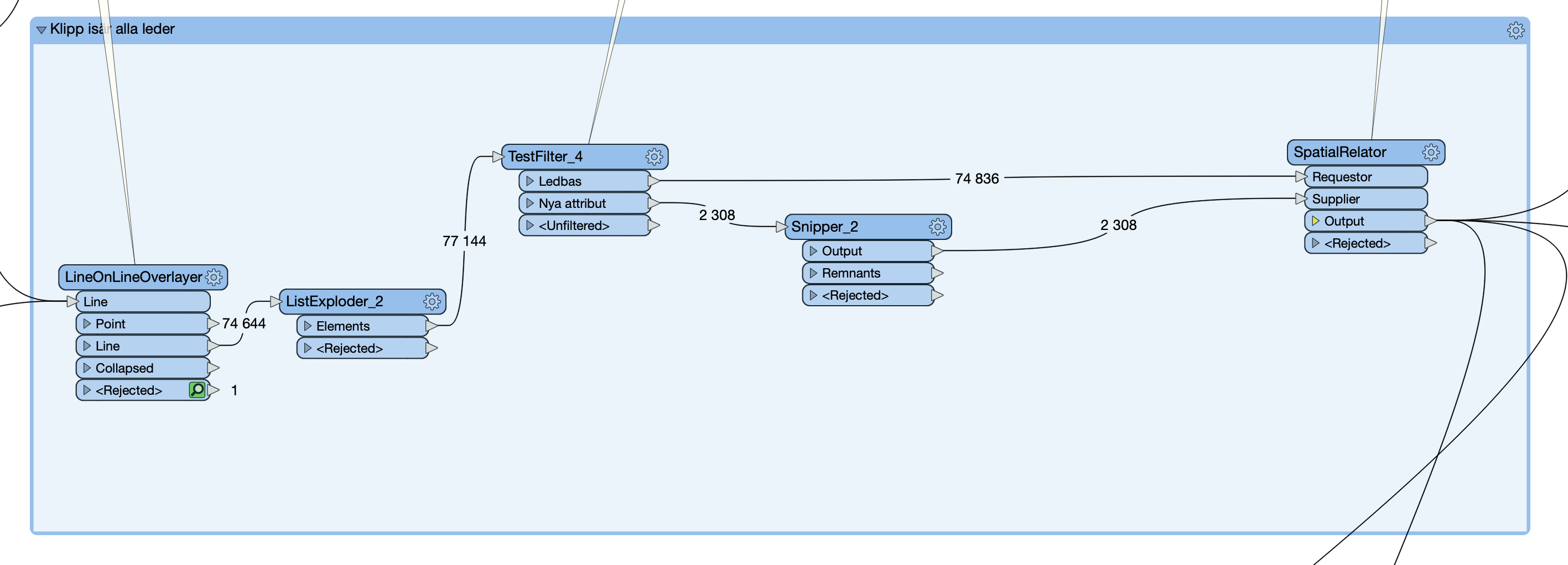I am using SpatialRelator to merge attributes from intersecting features B, C, D etc onto feature A. The number of supliers varies from 1 and upwards 4-5. My problem is that the transformer only seems to read the first intersecting suplier that enters, and then moves on.
Any ideas on how to solve this and merge the attributes from all incoming features?











